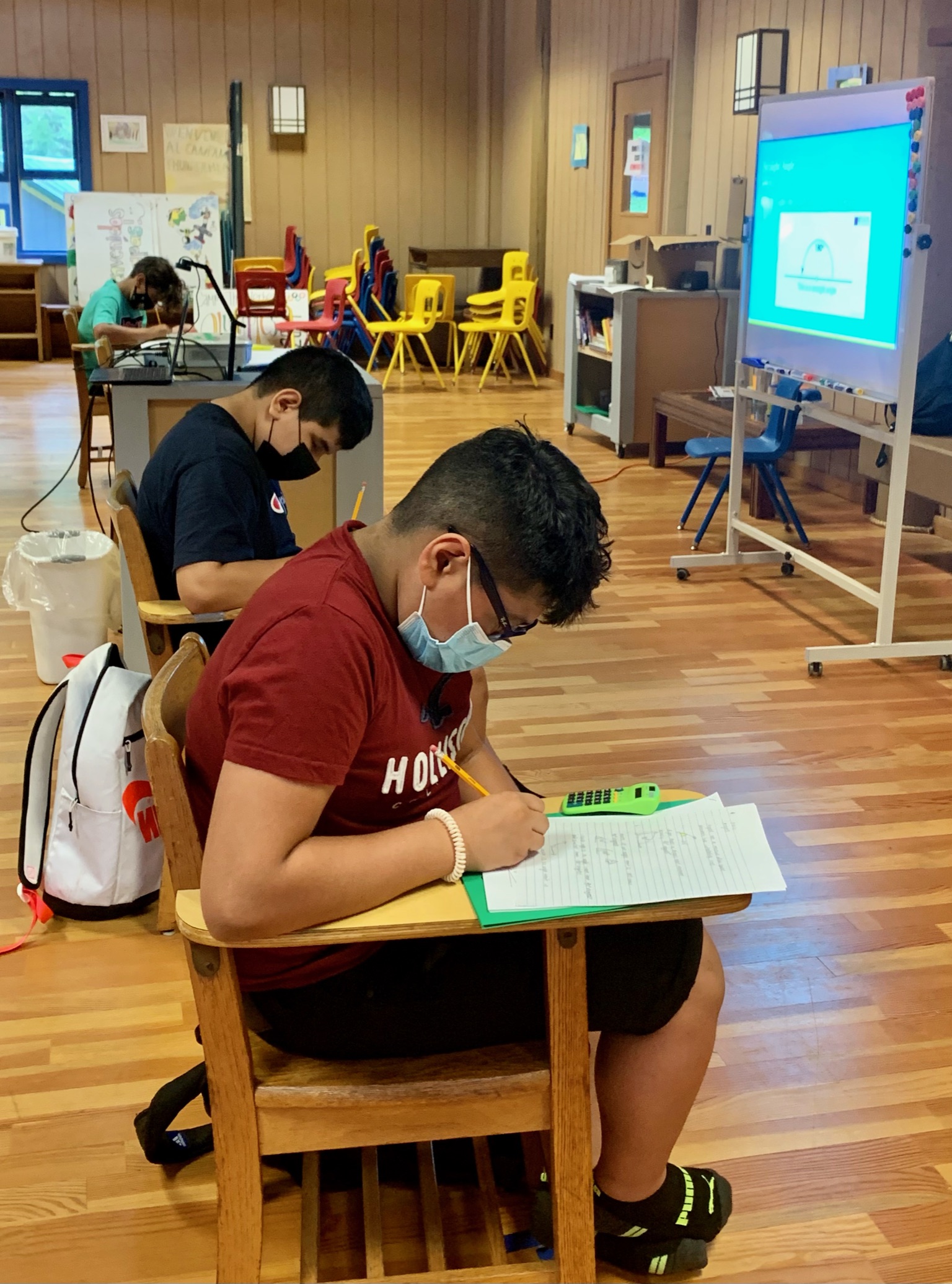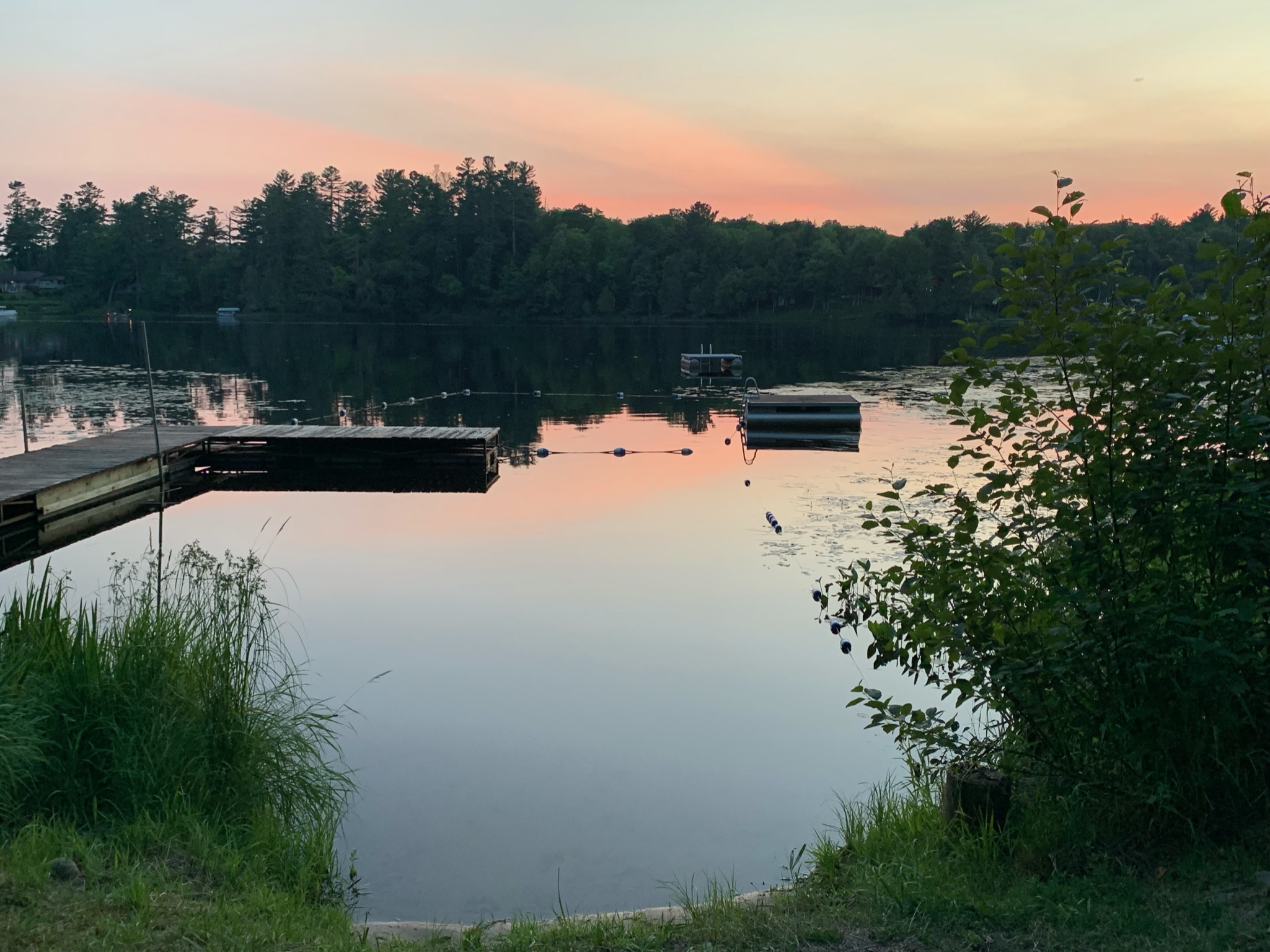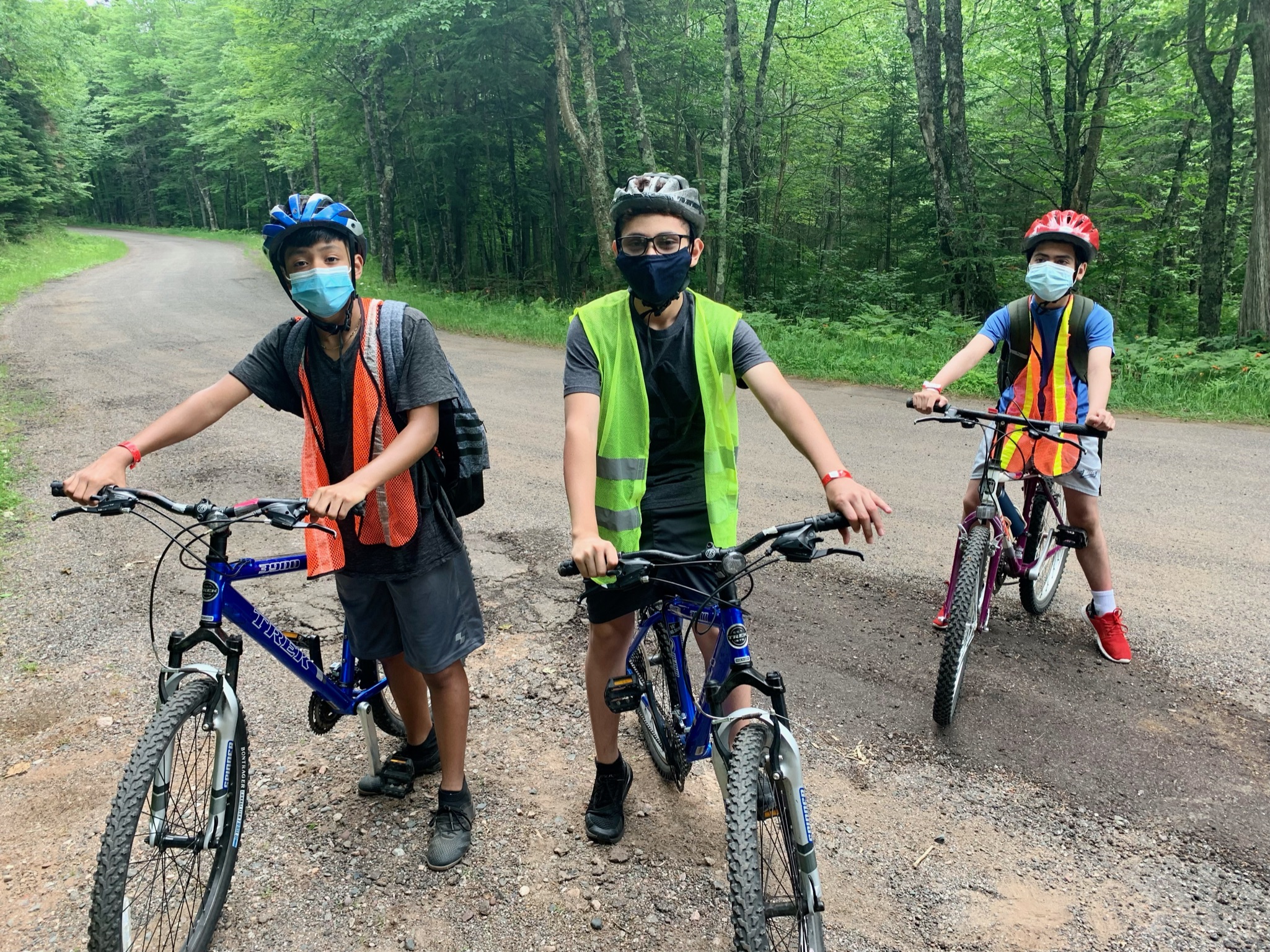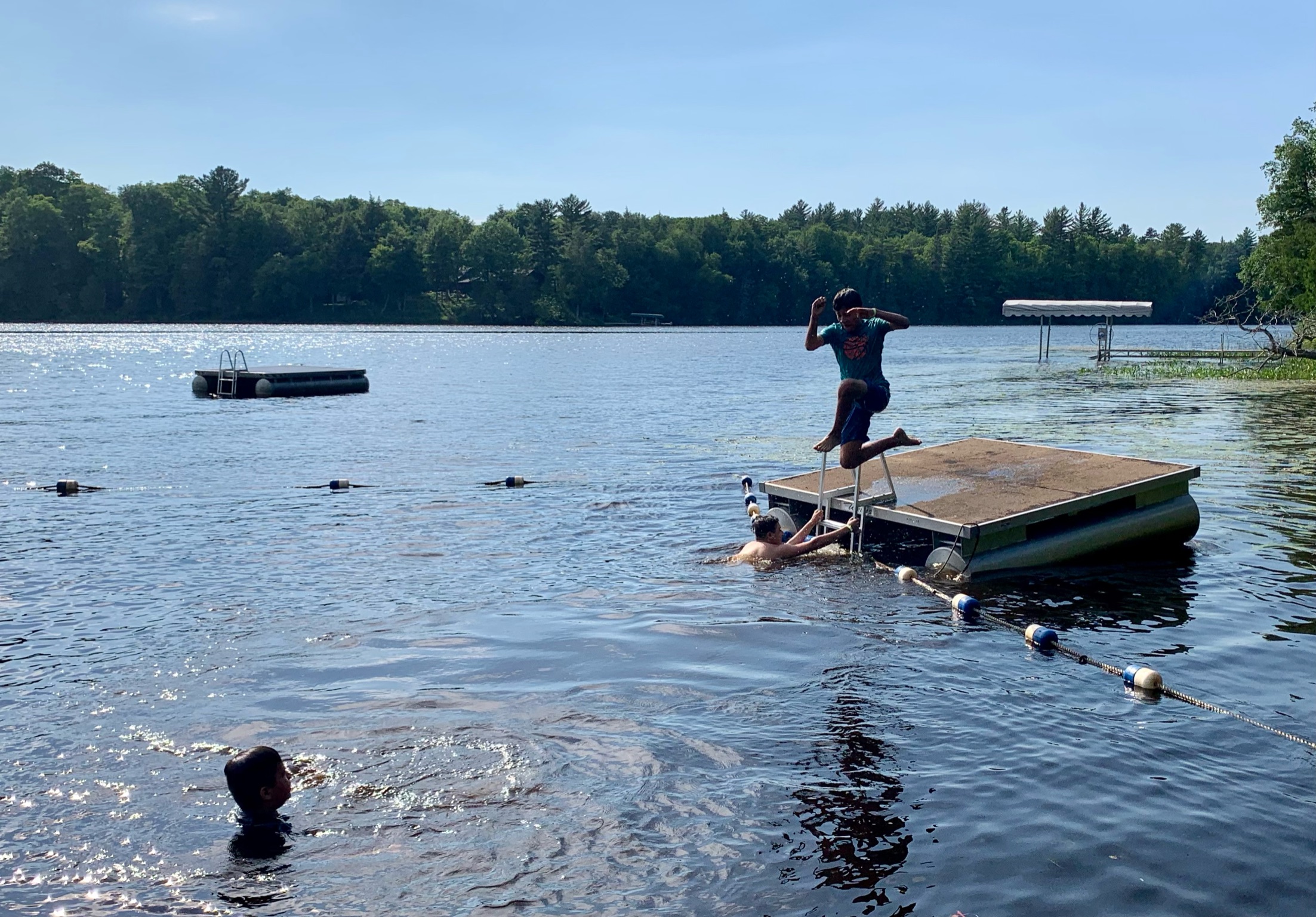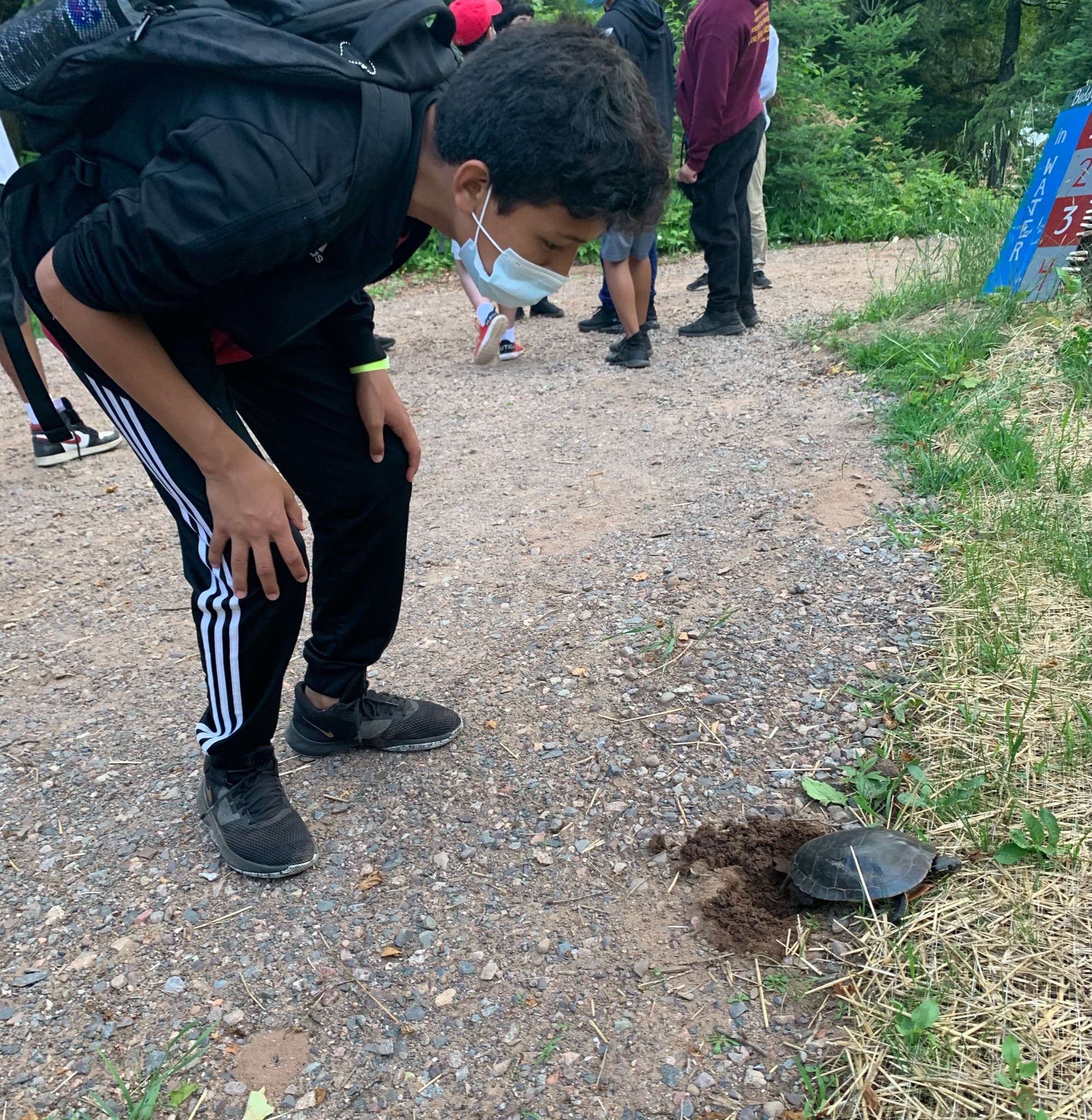
Nativity Jesuit Academy students attend Camp Thunderhead every summer to continue their academic progress — and have some fun, too. (Submitted photo)
For many students, summer is a time to take a break from academics, get outside and play, or pursue other interests. However, for far too many school children, summer is a time when the academic gains made over the school year are lost — something referred to as the “summer slide.” Each summer, these losses compound, and students often fall further behind.
Now in its 28th year, Nativity Jesuit Academy is combating the summer slide with a rigorous four-week residential, academic summer program in the north woods of Wisconsin. Camp Thunderhead combines educational classes with a traditional camp experience with their classmates.
Located in Iron County about 10 miles north of Mercer, in the tiny town of Oma, Camp Thunderhead was traditionally a boys’ camp, but since the school is now co-ed, this summer, girls also make their way to the north woods.
According to Carolyn Spath, the assistant director of advancement who oversees most of the communications at Nativity Jesuit Academy, students in grades 6-8 attend the camp each year. It began when the school started.
“Our school was founded by Larry Siewert and Fr. Bill Johnson in 1994, and at the time, they were looking to create a high-performing school in the south side primarily serving Latino boys,” she said. “What they were finding as schools like Marquette High were trying to recruit more from this neighborhood is that a lot of kids coming out of MPS didn’t have the academic background needed to succeed at those high-performing schools. So, Nativity was founded to fulfill that need.”
The rationale for starting the camp was that it’s challenging to get children to focus on learning in the summer. Because it isn’t fun, they wanted to find a way to get kids out of the neighborhood for a month and focus on school.
That began the model for the summer camp, in which students would have morning classes in math, language arts and natural sciences. Students participate in the typical camp experience, such as water skiing, swimming, tubing, hiking, riding bikes, soccer, and arts and crafts, in the afternoon.
“As the school eventually became K4-8, we offered a traditional summer school program in the building in Milwaukee for those in grades 1-5,” said Spath. “Then in sixth grade, they know camp is coming and look forward to it all year long.”
According to Josh Kraemer, director of Camp Thunderhead, students are aware of the many benefits of camp and look forward to it all year.
“The kids hear about it from siblings, cousins or other relatives, and they are very excited to participate in the camping experience,” he said. “By eighth grade, they don’t want to leave.”
The camp is 100 percent free and part of the school choice program; benefactors account for about 48 percent of the operating budget. The camp is funded almost exclusively by private donations, and Nativity Jesuit Academy provides transportation for the six-hour drive to the camp.
While the camp is wildly popular among students, some of the younger ones become a little homesick initially, said Elizabeth Siewert, girls’ camp director.
“It is challenging at first, but we have a wonderful, supportive counseling staff who have had a lot of training (and) who know how to work with the students when they are missing home,” she said. “The students are with their peers (who) they are with the whole year long, so that helps when they are missing home. The children also stay in contact with their families through letter writing and a phone call to home.”
In addition to coursework, students take daily reading tests online in the Nativity Accelerated Reading program, pray together, share reflections and celebrate Mass. Students have meals together, attend daily meetings or reflections during breakfast and lunch, and pray the Examen daily as a group. In the evening, there are campfires, games and singing.
In most years, when students stay at the Camp for a month, a parents’ weekend is offered. This year, due to COVID-19, students participated in a virtual camp for three weeks and a one-week camp experience in person.
The benefits for the students from the summer camp have resulted in retention well north of 90 percent from year to year, ultimately preparing them for high school.
“Nativity and the camp program are the intentional scope and sequence; camp is not an island or a remote site living on its own,” said Kraemer. “The camp/school partnership is so strong, so aligned and so in sync that the retention is one of many examples of how the camp and the school are connected. Students and families approach school in a similar way they approach camp and vice versa. That intentional structure from day one to now — the partnership of school and camp — has led not only to retention but a continuing faith-building, trusted, mission-driven program.”
When students leave Nativity, they are in line with those entering high school, partly due to the school’s graduate support program that remains with the students through high school.
“Each student is assigned a mentor who meets with them monthly in an official capacity and also checks in twice a month in between the Nativity sanctioned events,” said Spath. “Our graduate support director also meets with them through high school and has access to their grades and hears about it if they are misbehaving or having other issues.”
Spending 12 months together in class and summer camp has kept the students in a close-knit community.
“The students have remained close after graduation and even formed an alumni association,” said Spath. “We are blessed to work with our parents and students, and have had a lot of positive feedback. The relationships between parents and teachers are closer than I have seen anywhere else.”



